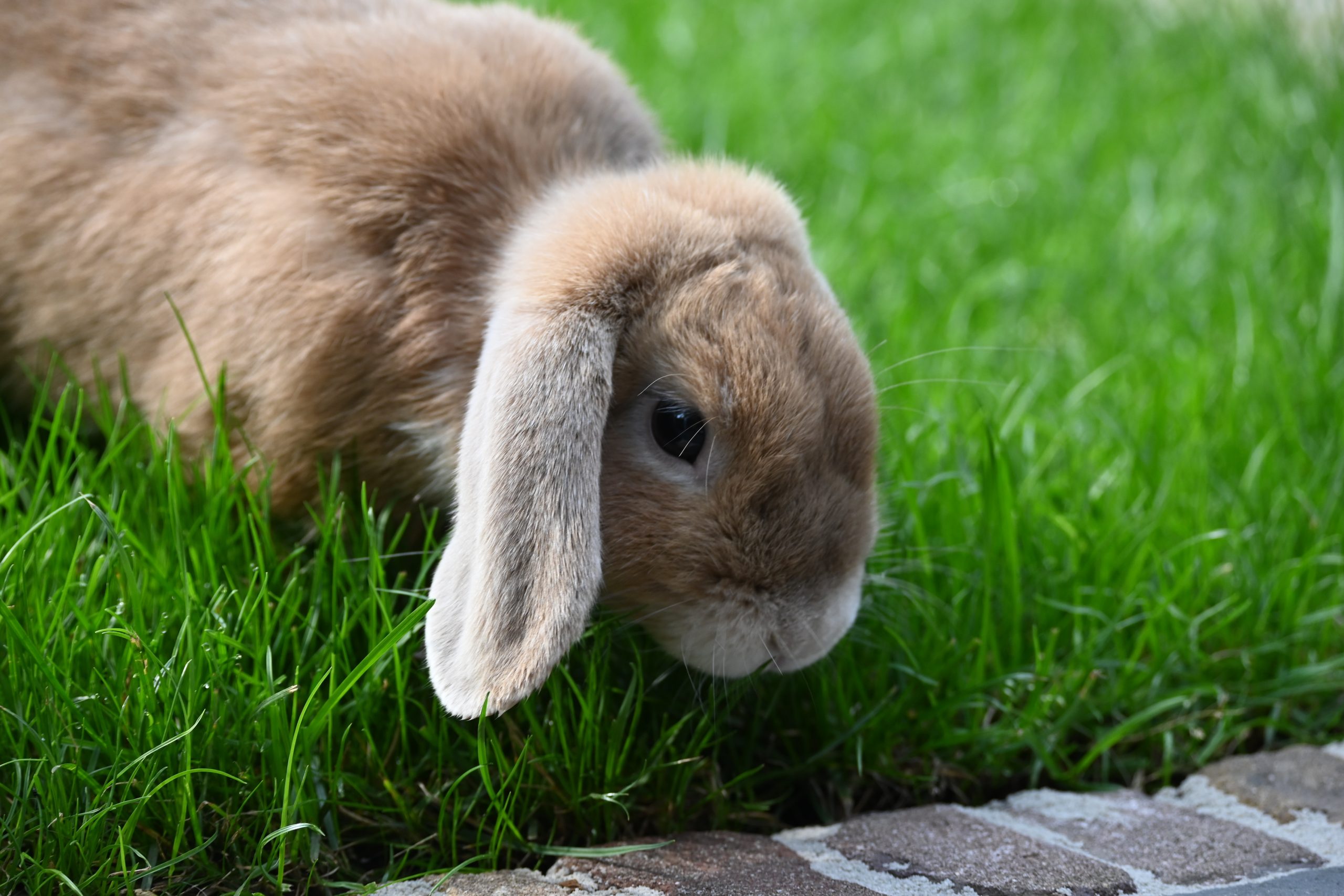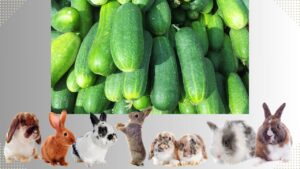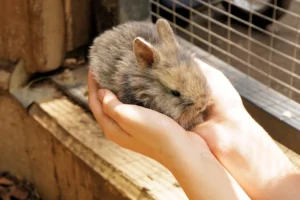Are you curious about the role rabbits play as primary consumers in the food chain?
Delve into the fascinating world of these furry creatures as we explore their diet, feeding habits, and their impact on the environment.
Discover how rabbits have adapted to be efficient feeders and why they hold a significant position in the ecosystem.
Join us on this scientific journey to unravel the truth about whether rabbits truly deserve the title of primary consumers.
In This Article
- 1 Key Takeaways
- 2 Definition of Primary Consumers
- 3 Understanding the Food Chain
- 4 Role of Rabbits in the Ecosystem
- 5 Diet and Feeding Habits of Rabbits
- 6 Rabbit Adaptations for Feeding
- 7 Impact of Rabbit Consumption on the Environment
- 8 Conclusion: Are Rabbits Truly Primary Consumers?
- 9 Frequently Asked Questions
- 9.1 How Do Rabbits Contribute to the Balance of the Ecosystem?
- 9.2 Can Rabbits Survive on a Diet That Consists Solely of Plants?
- 9.3 Do Rabbits Have Any Adaptations That Help Them Find Food in Their Environment?
- 9.4 Are Rabbits the Only Primary Consumers in Their Habitat, or Are There Other Animals That Fulfill the Same Role?
- 9.5 What Are the Potential Consequences of a Decline in the Rabbit Population for Other Organisms in the Food Chain?
- 10 Conclusion
Key Takeaways
- Rabbits are primary consumers in an ecosystem.
- They play a crucial role in converting plant matter into energy and nutrients.
- Rabbits maintain the balance of the ecosystem by controlling plant growth.
- Overgrazing by rabbit populations can lead to habitat degradation and disrupt the balance of the ecosystem.
Definition of Primary Consumers
You’re probably wondering what primary consumers are. Well, let’s dive into the definition.
In an ecosystem, primary consumers are organisms that directly feed on producers, which are usually plants or other autotrophic organisms. They play a crucial role in the food chain by converting plant matter into energy and nutrients.
Primary consumers are commonly herbivores, meaning they only consume plant material. They’ve specialized digestive systems that allow them to break down and extract nutrients from cellulose, which is a complex carbohydrate found in plant cell walls.
Examples of primary consumers include rabbits, deer, cows, and sheep. These animals play an essential role in maintaining the balance of ecosystems by regulating plant populations and providing a food source for secondary consumers, such as predators.
Understanding the Food Chain
In the food chain, it’s important to understand the role of rabbits as primary consumers. These small mammals play a vital role in maintaining the balance of an ecosystem. Here are four important facts about the food chain dynamics and ecological relationships involving rabbits:
- Rabbits primarily feed on plants, such as grasses, leaves, and seeds. As herbivores, they consume large quantities of vegetation, helping to control plant growth and prevent overpopulation.
- Through their feeding habits, rabbits provide a valuable food source for secondary consumers, such as foxes, hawks, and snakes. They’re an essential part of the food chain, transferring energy from plants to higher trophic levels.
- Rabbits reproduce rapidly, with short gestation periods and large litter sizes. This allows their population to increase quickly, providing a consistent food supply for predators.
- Additionally, rabbits contribute to nutrient cycling by excreting waste that enriches the soil. This benefits other plant species and supports the overall health of the ecosystem.
Understanding the role of rabbits as primary consumers is crucial for comprehending the intricate web of ecological relationships within a food chain. By serving as a source of food and nutrients, these small mammals play a significant role in maintaining the delicate balance of nature.
Role of Rabbits in the Ecosystem
Understanding the role of rabbits in the ecosystem is crucial for comprehending the intricate web of ecological relationships within a food chain. Rabbits, as primary consumers, play a vital role in maintaining the balance of the ecosystem. They occupy a specific ecological niche, primarily feeding on plants and grasses. By doing so, they control plant growth and prevent overconsumption, ensuring a healthy and sustainable environment for other organisms.
Additionally, rabbits contribute to nutrient cycling through their droppings, which act as natural fertilizers for plants. However, in some cases, rabbit populations can increase rapidly, leading to overgrazing and habitat degradation. To prevent this, proper rabbit population control measures must be implemented, such as regulated hunting or introducing natural predators.
Diet and Feeding Habits of Rabbits
To sustain their energy and nutritional needs, rabbits primarily rely on a diet consisting of plants and grasses. Their digestive system is specially adapted to process these types of food.
Here are four important aspects of rabbit digestion and types of rabbit food:
- Herbivorous diet: Rabbits are strict herbivores, meaning they consume only plant-based materials. This includes various types of grasses, hay, and leafy greens.
- High fiber requirement: Rabbits have a unique digestive system that requires a high-fiber diet. Fiber helps maintain proper gut motility and prevents gastrointestinal issues.
- Cecotropes consumption: Rabbits have a special adaptation where they produce two types of feces. One type, called cecotropes, is soft and nutrient-rich. Rabbits consume cecotropes directly from their anus to obtain essential nutrients and vitamins.
- Limited intake of fruits and treats: While rabbits can eat small amounts of fruits and treats, these should be given sparingly as they’re high in sugar and can disrupt the delicate balance of the rabbit’s digestive system.
Understanding the specific dietary needs and digestion process of rabbits is crucial for providing them with a healthy and balanced diet.
Rabbit Adaptations for Feeding
You should be aware of the unique adaptations that rabbits have for feeding, such as their specialized dental and digestive systems.
Rabbits have continuously growing teeth that are adapted for grinding tough, fibrous vegetation. Their incisors are large and sharp, allowing them to efficiently cut through plant material.
Additionally, rabbits have a specialized digestive system that enables them to extract as many nutrients as possible from their food. They’ve a large cecum, which is a part of their intestine that houses beneficial bacteria.
This bacteria helps break down cellulose and other complex carbohydrates, allowing rabbits to digest plant matter more effectively. Furthermore, rabbits practice a behavior called coprophagy, where they consume soft, nutrient-rich fecal pellets called cecotropes.
This process allows rabbits to obtain essential nutrients, such as vitamins and proteins, that are produced by the bacteria in their cecum.
Overall, these adaptations enable rabbits to efficiently obtain and utilize nutrients from their plant-based diet.
Impact of Rabbit Consumption on the Environment
Did you know that consuming rabbits can have a significant impact on the environment? Here are four ecological consequences and biodiversity effects to consider:
- Habitat destruction: High rabbit consumption can lead to overgrazing, resulting in the destruction of vegetation. This can disrupt the balance of ecosystems and impact other species that rely on the same habitat.
- Reduced plant diversity: Rabbits have a preference for certain plant species, leading to a reduction in plant diversity. This can alter the composition of plant communities and potentially affect other organisms dependent on these plants.
- Predation pressure: When rabbit populations are high, predators may become more abundant, leading to increased predation on other species. This can have cascading effects on the entire food web.
- Competition with native herbivores: Rabbits are often introduced species and can outcompete native herbivores for resources. This can result in a decline in native herbivore populations, negatively impacting the overall biodiversity of an ecosystem.
Understanding the ecological consequences and biodiversity effects of consuming rabbits is essential in making informed decisions about their consumption to ensure the preservation of our environment.
Conclusion: Are Rabbits Truly Primary Consumers?
In conclusion, it’s important to consider the ecological consequences and biodiversity effects of rabbit consumption to make informed decisions about their impact on the environment.
When it comes to rabbit population control, their predation on other animals plays a significant role. Rabbits are known to consume a variety of plant species, which can have implications for the vegetation composition and structure in an ecosystem. This, in turn, can affect the availability of resources for other herbivores and impact their population dynamics.
Additionally, rabbits are known to be preyed upon by a wide range of predators, including foxes, birds of prey, and snakes. Their consumption by these predators helps maintain a balance in the ecosystem and prevents rabbit population explosions.
Considering the interactions between rabbits and other animals is crucial for understanding their role as primary consumers and the importance of their population control in maintaining a healthy ecosystem.
Frequently Asked Questions
How Do Rabbits Contribute to the Balance of the Ecosystem?
Rabbits contribute to the balance of the ecosystem by controlling their population and impacting plant growth. They play a crucial role in regulating vegetation levels and preventing overgrowth, which allows for a healthier and more sustainable environment.
Can Rabbits Survive on a Diet That Consists Solely of Plants?
Yes, rabbits can survive on a diet of solely plants. Their digestive system is adapted to break down plant material and extract nutrients. They have specific nutritional needs that can be met through a varied plant-based diet.
Do Rabbits Have Any Adaptations That Help Them Find Food in Their Environment?
Rabbit food adaptations allow them to efficiently find and consume plant-based food in their environment. Their feeding behavior involves grazing on grasses, herbs, and other vegetation, utilizing their sharp incisors to efficiently cut and consume plant material.
Are Rabbits the Only Primary Consumers in Their Habitat, or Are There Other Animals That Fulfill the Same Role?
In rabbit habitats, there are other primary consumers aside from rabbits. The presence of rabbits can impact the competition for resources among these animals. It is important to understand the dynamics of these interactions for effective conservation management.
What Are the Potential Consequences of a Decline in the Rabbit Population for Other Organisms in the Food Chain?
The potential consequences of a decline in the rabbit population include disruptions in ecosystem dynamics and impacts on other organisms in the food chain. This decline can lead to changes in predator-prey relationships and alter vegetation dynamics.
Conclusion
Based on their diet and feeding habits, it’s clear that rabbits play a significant role as primary consumers in the ecosystem. Their adaptations for feeding, such as sharp incisors and a specialized digestive system, allow them to efficiently consume plant material.
However, it’s important to note that while rabbits are indeed primary consumers, claiming that they’re the ‘voracious vegetarians’ of the animal kingdom would be an exaggerated hyperbole.
Nonetheless, their impact on the environment can’t be underestimated.





